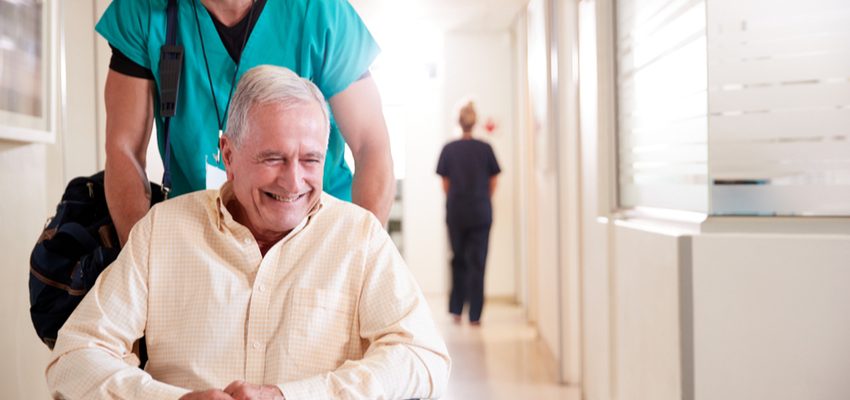Blog

Emergency Preparedness In Senior Living Communities: Safeguarding Seniors With Confidence
July 28, 2025 0 Comment Category: Care Center
Senior Rehab Facilities
Emergencies can strike at any moment, whether it’s a natural disaster, a medical crisis, or a power outage. For senior living communities, where residents may have physical, cognitive, or medical limitations, emergency preparedness isn’t just a protocol; it’s a critical necessity. Ensuring the safety, comfort, and continuity of care for older adults during emergencies requires planning, coordination, and a proactive approach.
This article examines the significance of emergency preparedness in senior living communities, outlines the key components of comprehensive plans, and provides guidance on how families can evaluate a facility’s readiness.
Why Emergency Preparedness Matters in Senior Living
Seniors are among the most vulnerable populations during emergencies. Age-related physical limitations, chronic health conditions, mobility impairments, and sensory deficits can hinder a senior’s ability to respond quickly or independently during a crisis.
Additionally, residents often rely on caregivers, medical equipment, and medications to maintain their health and overall well-being. Disruptions to care, even temporarily, can be life-threatening without a well-established emergency response plan.
Preparedness ensures that:
-
Lives are protected in high-risk situations
-
Medical care continues uninterrupted
-
Family members are informed and reassured
-
Facility operations can resume quickly after a crisis
Common Emergencies Senior Communities Must Prepare For
Emergency preparedness plans should account for a wide range of potential scenarios, including:
-
Natural Disasters: Earthquakes, hurricanes, tornadoes, floods, wildfires
-
Medical Emergencies: Outbreaks of flu, COVID-19, or other infectious diseases
-
Power Outages: Especially critical for residents using oxygen machines, lifts, or electric beds
-
Fires: Both internal building fires and nearby wildfire threats
-
Severe Weather: Heatwaves or winter storms that may affect mobility, heating, or access to resources
-
Security Threats: Intruders or violent incidents
-
Evacuations: Whether mandatory or precautionary
Each of these scenarios demands specific protocols to ensure rapid response, clear communication, and continuity of care.
Key Components of an Emergency Preparedness Plan
An effective emergency preparedness plan in a senior living community should include the following core elements:
1. Risk Assessment and Planning
Facilities should assess local risks based on geography and history. For example, communities in California must prioritize earthquake and wildfire preparedness, while those in the Midwest may focus more on tornado protocols.
The plan should identify:
-
Emergency threats are most likely to occur
-
Resources available and needed
-
Potential vulnerabilities of the resident population
2. Resident-Specific Needs
Individual resident care plans should include emergency considerations. This includes:
-
Medication lists and dosage
-
Mobility and transport needs
-
Communication challenges (e.g., dementia or hearing loss)
-
Medical equipment that requires power
These personalized details ensure that no resident is left behind or underserved during an emergency.
3. Staff Training and Drills
All staff must be trained to respond quickly and appropriately in various emergency scenarios. This includes:
-
Evacuation procedures
-
Fire extinguisher and alarm use
-
First aid and CPR
-
Handling residents with dementia or behavioral concerns
Regular drills, both scheduled and surprise, are essential to maintain readiness.
4. Communication Protocols
Effective communication is vital during a crisis. A robust plan includes:
-
Emergency contact lists for each resident
-
Systems to notify family members quickly (phone trees, texts, or emails)
-
Coordination with emergency responders (fire, police, EMS)
-
Clear signage and multilingual communication tools, if needed
5. Supplies and Equipment
Communities should maintain emergency supply kits with:
-
Water and non-perishable food (3–5 days’ worth)
-
Flashlights and batteries
-
First-aid supplies
-
Extra medication stockpiles
-
Blankets, hygiene kits, and mobility aids
Facilities should also have access to portable power sources like generators.
6. Evacuation and Shelter-in-Place Plans
Every facility must have:
-
Pre-designated evacuation routes and exits
-
Transportation agreements with ambulance or bus services
-
Alternate care locations in case of full evacuation
-
Shelter-in-place strategies for situations like severe storms or wildfires
These plans must be shared with staff, residents, and families and updated regularly.
COVID-19: Lessons in Preparedness
The COVID-19 pandemic highlighted the need for infection control in emergency planning. Many senior living communities adapted by:
-
Creating isolation units
-
Enhancing PPE stockpiles
-
Training staff on infection prevention
-
Using virtual tools to communicate with families
These lessons have led to more robust public health preparedness in modern senior communities.
What Families Should Ask
When evaluating a senior living community, families should ask about emergency preparedness measures. Consider these key questions:
-
Does the facility have a written and accessible emergency plan?
-
How often are staff trained and drills conducted?
-
How are residents’ individual emergency needs documented?
-
What is the communication process during an emergency?
-
How are medications and medical equipment handled during a crisis?
-
Is there a backup power system?
-
What is the evacuation plan for residents with mobility issues?
A reputable facility will not only have answers to these questions but will also involve families in preparation discussions.
Technology and Emergency Readiness
Many senior living communities are now incorporating technology to improve emergency response, such as:
-
Mass notification systems to alert families instantly
-
Electronic medical records are accessible to first responders
-
Real-time tracking systems for residents during evacuations
-
Automated backup systems for power-dependent medical equipment
These tech advancements provide faster, safer, and more transparent responses to crises.
Conclusion: Planning Saves Lives
Emergency preparedness in senior living communities is not a luxury; it’s a fundamental component of quality senior care. It requires careful planning, routine training, and a commitment to protecting residents with compassion and competence.
By choosing a facility that prioritizes safety and preparation, families can have peace of mind knowing their loved ones are in good hands, even when the unexpected occurs.

leave A comment